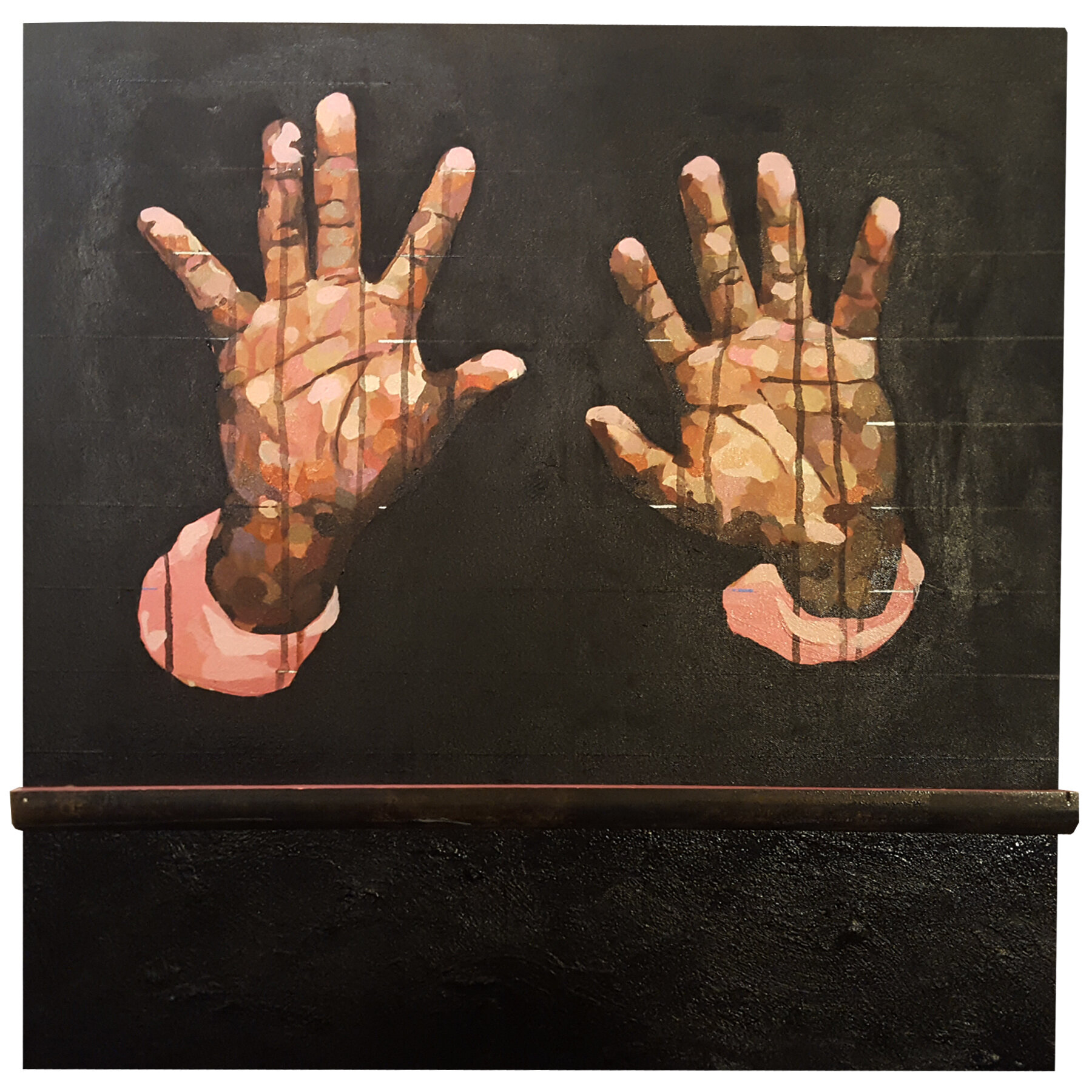Jeremy Okai Davis
February 18, 2019
Jeremy Okai Davis makes paintings that adroitly mix elements of abstraction and figuration. The skintones of his figures are alive with spots of intense color that are a testament to optical color mixing. He developed this style by blowing up small images from the internet and noticing the pixellated colors that appear. "The colors are all there for your eye to blend when you step back but up close you can see them all." he says. The colors also operate as a metaphor for the diversity, complexity, and nuance of actual individuals who are too often understood only one-dimensionally as black, African American, or people of color. Up close it's easier to distinguish, understand, and appreciate nuance and difference.
Foust, acrylic on panel, 2019
JUNIUS, acrylic & canvas w/ found wood, 2017
Junius (2017) is a portrait in warm yellows, pale oranges, and rich earth colors of a young black man whose face is divided horizontally by a piece of wood affixed to the canvas. Below this dividing line, he is seen in profile wearing black and white stripes. Above, the man's eyes fix the gaze of the viewer in an ambiguous and unwavering stare. Ambiguous because his mouth, in profile, remains expressionless. In popular usage, JUNIUS is the pseudonym of an anonymous and outspoken 18th British government critic. The title, coupled with the painting, highlights a split between public and private identites. Sometimes that division takes the form of W.E.B. Du Bois' 'Veil' and sometimes it looks like the difference between our highlight reel and our blooper moments.
Messenger (For Art Blakey), acrylic, screen print, & found wood on panel, 2018
JESTER, acrylic on canvas, 2016
Jester (2016) depicts a man in profile cropped just below his nose and wearing a large black and white striped dunce cap. A painterly ray of blue and pink emanates from his head as if to relate his supreme consciousness of color and form. In medieval courts jesters existed solely to entertain the royalty, which is increasingly analogous to how the uber wealthy have staked out the art world as their playground. There's an apparent elitism inherent to making art and continued participation is something with which many artists, most of whom are acutely aware of class struggle, grapple morally. But it's also an opportunity to infiltrate, subvert, critique, or make jest.
Untitled (Pink & Brown), acrylic & pumice on canvas wrapped panel, 2017
CUTIS VERA, acrylic on canvas, 2017
CUTIS VERA (2017) shows a pair of hands held up to show us their palms, rendered in spots of warm pinks, violets, and rich earth colors. The gesture echoes a rallying cry of anti police brutality activists in America today: "Hands Up Don't Shoot!" Because hands are a site of both touching and being touched, they are an apt metaphor for subjectivity and individuality. In this way the painting can be understood as an unseen figure emphatically declaring their own selfhood.
You can see Jeremy's work at PDX airport in Terminal A or at Stephanie Chefas Projects until February 22nd. IG: jeremyokai






